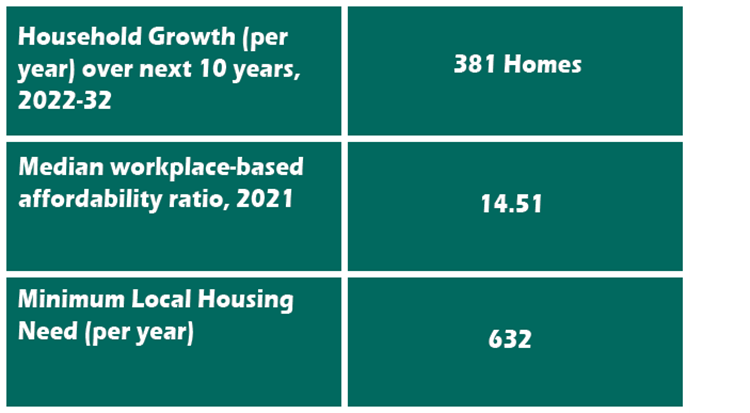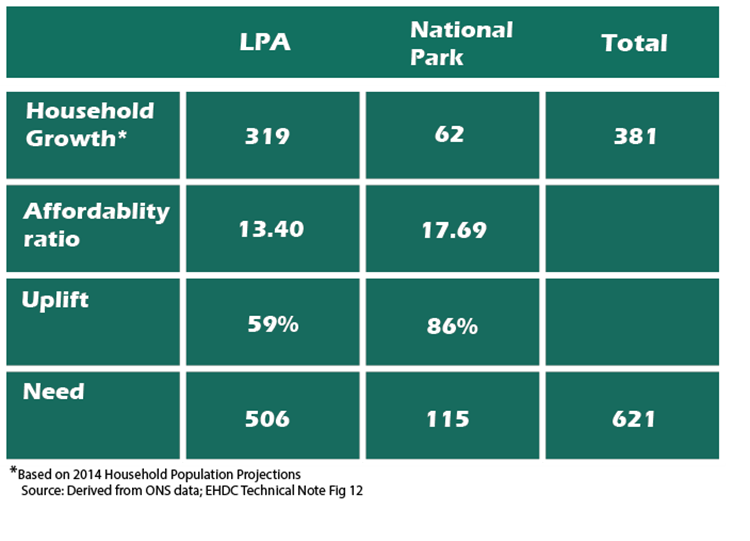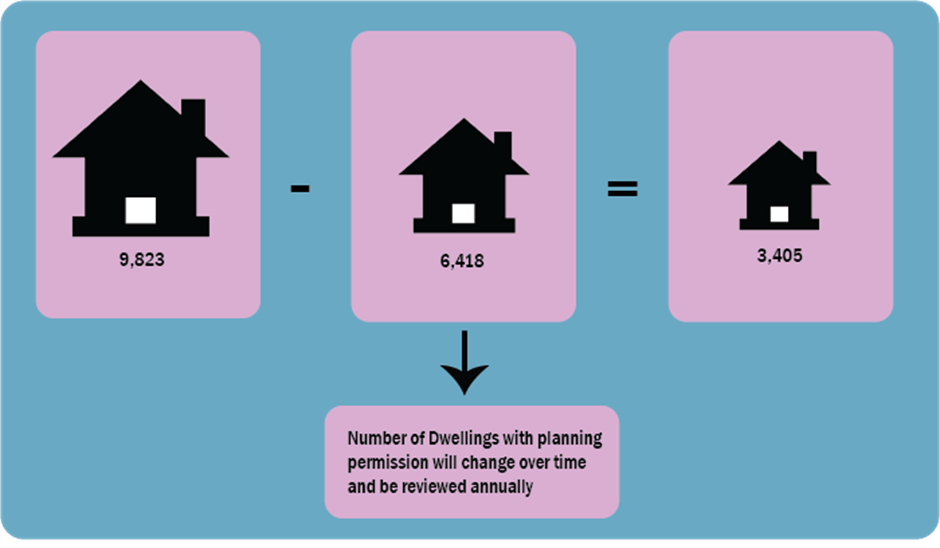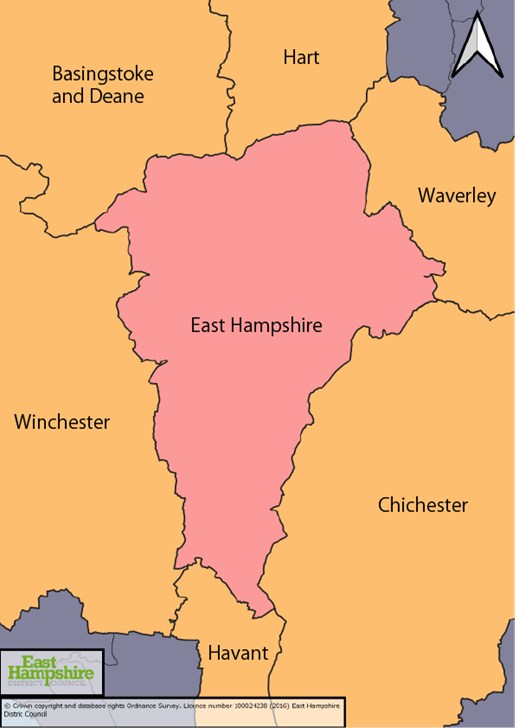Home
Population & Housing
Discover East Hampshire Local Plan , Population & Housing. Have your say today and share your views on the future of your community. Powered by Commonplace, the leading community engagement platform.
Introduction
Increasing overall housing delivery is one of the Government’s long standing key priorities for the planning system in England. Meeting future housing needs is therefore a central objective for all Local Plans, including ours.
The assessment of housing need we have carried out informs how many new homes will be required across the district. Our new Local Plan will set out how, through the planning system, we will seek to address that need.
A complicating factor is that East Hampshire district is split into four areas as a consequence of the SDNP. This means that there are in fact two LPAs operating in the district, East Hampshire and the SDNPA.
The East Hampshire Local Plan 2040 focuses only on those parts of the district outside of the SDNP. However, housing needs are calculated for the district as a whole. Therefore, one of the key issues for our Local Plan is to determine what provision, if any, we make for the housing needs of the SDNPA.
What you’ve told us so far in terms of housing provision
We received a wide range of views when consulting on housing provision with responses from local communities, those in need of housing, and the development industry. There is general support for meeting the identified local housing needs and seeking to direct development to the most sustainable and accessible locations. However, views differ on the approach taken to assess local housing need, as well as meeting the unmet needs of neighbouring authorities. We have to balance these views to enable us to prepare a Local Plan that meets Government requirements, whilst taking account of local opinion.
Page break
How is housing need calculated?
National Planning Policy (para 61) states that in order to determine the minimum number of homes needed, strategic policies should be informed by a local housing need assessment, conducted using the standard method in national planning guidance (unless exceptional circumstances justify an alternative approach which also reflects current and future demographic trends and market signals).
Government guidance is also clear that the standard method for assessing local housing need is a minimum number and that “consideration can still be given as to whether a higher level of need could realistically be delivered. This may help prevent authorities from having to undertake an early review of the relevant policies.”
There is a strong emphasis to using the standard method and one of the benefits is that given this is based on national published data, then at the Local Plan examination stage the local housing need would not be challengeable.
 New housing in Alton
New housing in Alton
It is important to note that although the formula for calculating the housing need using the standard method is set in Government guidance, the data sets that lie behind the calculation are subject to change. At present a key part of the calculation is use of the 2014 based household projections. This is used to calculate household growth over the next ten years (2022-2032) and establishes a demographic baseline to be used within the calculations.
The other key component of the calculation is application of the median workplace-based affordability ratio – the latest published being for 2021 and this is updated annually and published in March. This is about applying an affordability uplift to the demographic baseline to take account of the relative affordability of housing in the district – so in simple terms the adjustment increases the housing need where house prices are high relative to workplace incomes.

Whilst complicated, the findings generate the following minimum local housing need for the whole of East Hampshire district:
 Source: HEDNA 2022 (Table 5.1)
Source: HEDNA 2022 (Table 5.1)
As the standard method housing need can only be calculated for the whole district of East Hampshire and not just for the Local Plan area, East Hampshire is permitted by national planning guidance to calculate its own housing need figure using an alternative method.
However, planning guidance stresses that any other method should only be used in exceptional circumstances. It says “Where an alternative approach results in a lower housing need figure than that identified using the standard method, the strategic policy-making authority will need to demonstrate, using robust evidence, that the figure is based on realistic assumptions of demographic growth and that there are exceptional local circumstances that justify deviating from the standard method. This will be tested at examination".
The Council therefore commissioned a piece of work to specifically explore this matter acknowledging the position with the SDNPA. That report (Technical Note: Testing the Standard Method Housing Need for East Hampshire) concludes that at a district level there is no evidence to suggest that data feeding into the Standard Method is substantially wrong.
The standard method affordability ratio is based on the median house price divided by the median income, with the most recent data being for 2021 giving an affordability ratio of 14.51.
Using a household growth projection split between the two areas and their associated affordability ratios (which differ to district-wide figures, due to geographies), gives the following breakdown of local housing need between the two areas.

What is evident from the above is that there is no significant difference in the final district wide need number from the standard method calculations (632 vs 621).
On this basis, at this point in time there is no evidence to support moving to a lower or higher figure for housing need than is derived from the standard method.
Page break
Local housing needs
The Housing and Economic Needs Assessment (HEDNA) 2022 sets out the overall housing need for East Hampshire district based on the standard method of calculating housing need, disaggregating the number between the two separate LPAs.
The housing need figure for the whole district, using the Government’s standard method formula is calculated as 632 homes per year. For the Local Plan this means the housing need is 517 homes per year, which over the emerging plan period (2021-2040) equates to 9,823 homes, minus existing supply (completions, sites with planning permission, existing allocations, and a windfall allowance) = about 3,405 new homes to be planned for through the Local Plan.

Page break
Meeting the unmet housing needs of our neighbours
South Downs National Park Authority (SDNPA)
The housing need figure for the whole district, using the standard method equates to 632 homes per year.
For East Hampshire LPA area this means the local housing need is 517 homes per year, and for the SDNP LPA area 115 homes per year.
Past evidence for the South Downs Local Plan determined the need for 113 homes per year in the part of East Hampshire which falls within the National Park. However, given the policy considerations and the need to ensure that ‘great weight’ is given to “conserving landscape and scenic beauty in National Parks”, the expectation is that the SDNP will not necessarily plan to meet these needs in full, giving priority to meeting affordable need and/or supporting the local economy and local communities within the SDNP.
Statements of Common Ground (SoCG) were agreed between the two LPAs to support previous emerging Local Plans, endorsing the position that the SDNPA will meet the requirement of 100 homes per year until 2028 (previous plan period).
The above numbers in terms of the previous and current need identified for the SDNPA are not significantly different – previously identified need of 113 homes per year and a commitment to deliver 100 homes per year, compared to current need of 115 homes per year.
Consequently, it is not considered that there is a strong argument to move away from a similar approach for the East Hampshire Local Plan 2040 by seeking agreement with SDNPA to meet the 115 homes per year identified in the HEDNA 2022.
The SDNPA has also commenced a review of its Local Plan and revised evidence will be able to inform whether the assumption expressed above is realistic and deliverable.
Unmet needs of other planning neighbours
National planning policy (para 11) requires local plans to ‘as a minimum, provide for objectively assessed needs for housing and other uses, as well as any needs that cannot be met within neighbouring areas (as established through statements of common ground)’.
The location of East Hampshire district means it has a number of neighbours, in Hampshire, Surrey and West Sussex:

The Southern Parishes Clanfield, Horndean and Rowlands Castle also fall within the Planning for South Hampshire (PfSH) sub-area, which collectively undertakes research and publishes the results on various topics including housing.
In the light of the Government’s Standard Method the PfSH authorities have started work on a revised sub-regional planning statement which will also function as a SoCG between the partners in due course. This will include a consideration of the revised housing figures for each local authority and an assessment of potential sites to meet this requirement by 2036 with a wider planning vision covering the period to 2050.